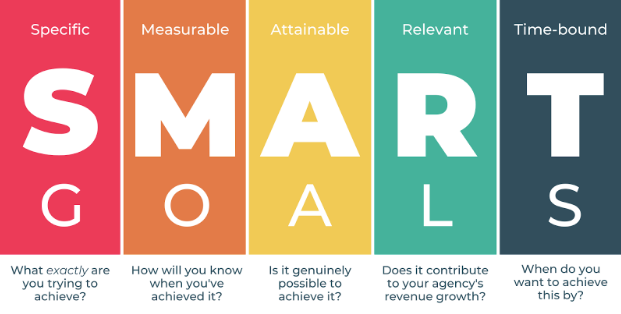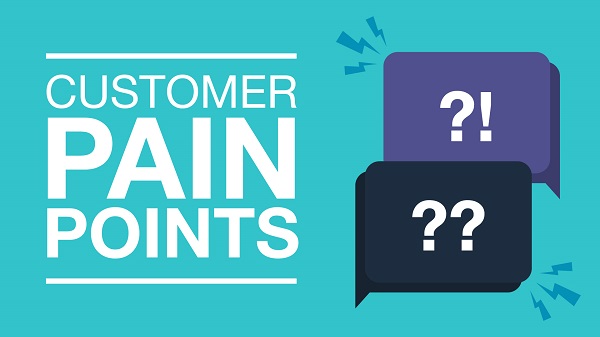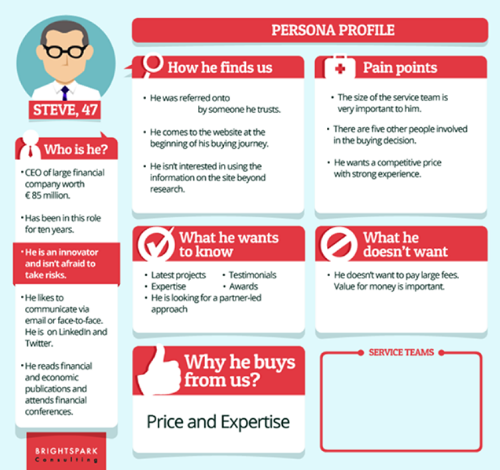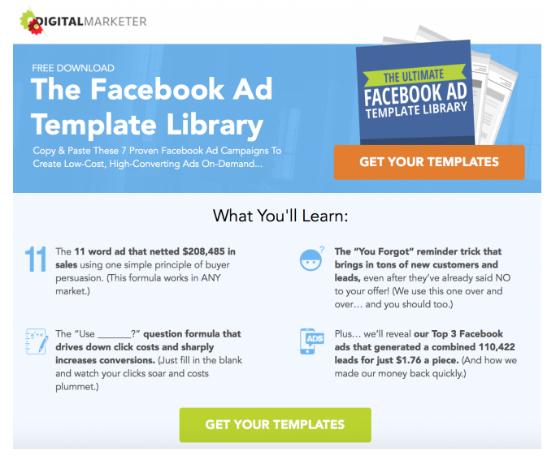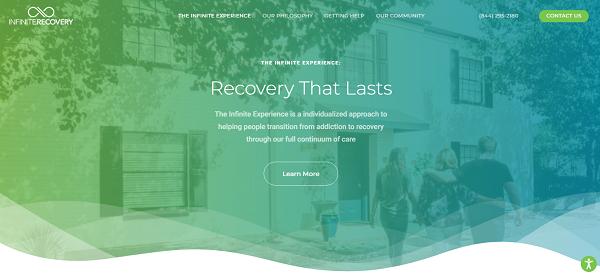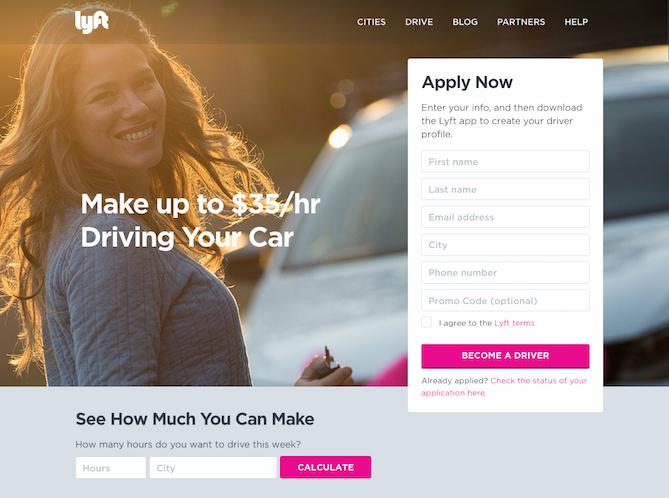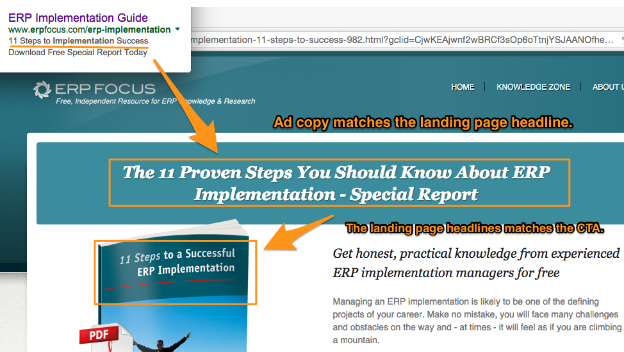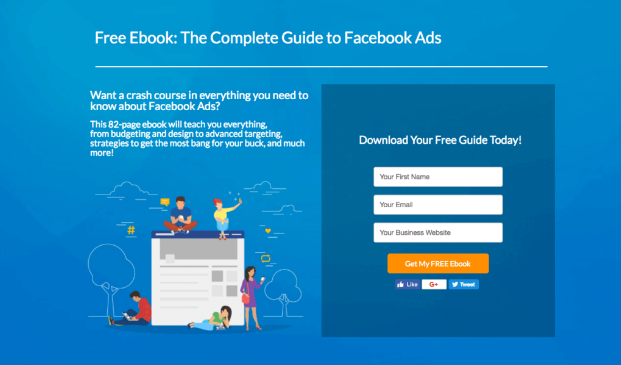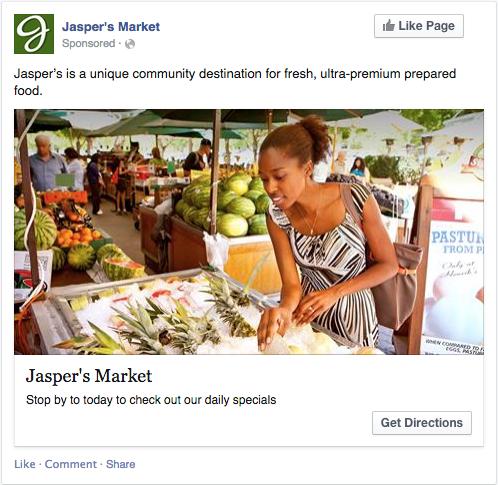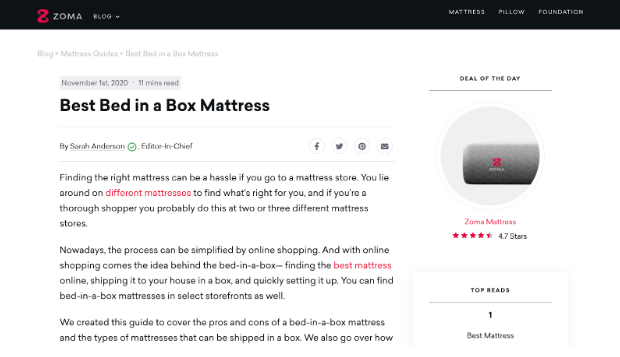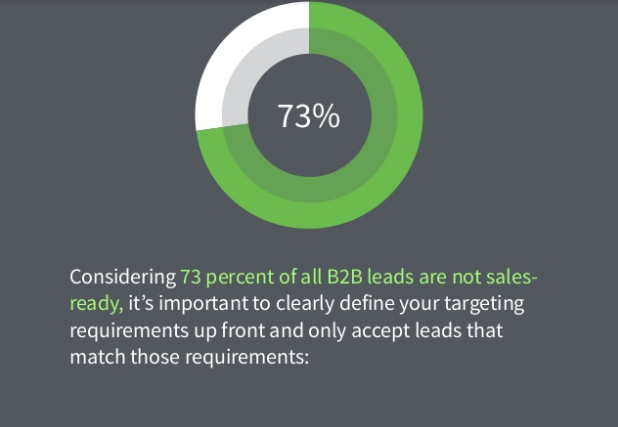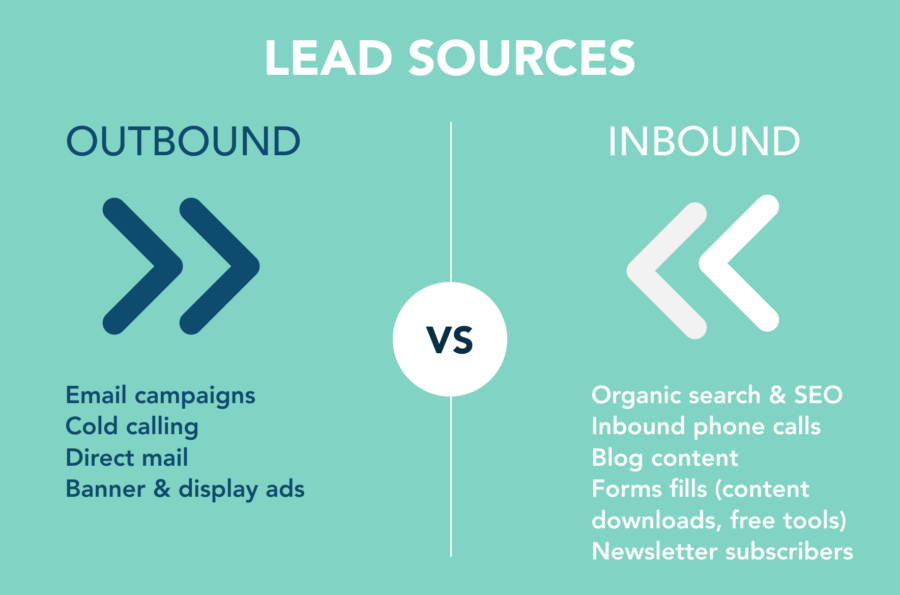Leads are the lifeblood of your business – whether online or offline.
If you’re struggling to get leads, there’s a chance that your lead generation strategy is leaky. According to 65% of businesses that responded to a survey by HubSpot, “generating traffic and leads is their biggest challenge when doing business online.”
Nowadays, customers are smarter because they have access to better technology and tools.
How do you prove that you’re the best?
The most effective way to earn the trust of an ‘informed’ audience is to be honest, transparent, solution-focused, and empathic. These are the ingredients that make up a successful lead generation strategy.
In this article, I’ll walk you through the simple but often neglected process of creating a high-converting lead generation strategy.
Table of Contents
Why is lead generation important?
There’s no alternative to lead generation. It’s as important as choosing a good niche for your business.
As a business owner, It’s important to capture and nurture new leads and persuade them to become paying customers. Targeted leads are business assets.
If you’re getting consistent leads into your sales funnel, your revenue will grow YoY (year over year). Your competition may even give up — considering the pace of your growth.
There are several ways to generate leads to your business — for example:
- Giving away valuable (but free) eBooks and white papers
- Offering free trials for your software product
- Hosting live or automated webinars
And so on.
Note: The aim of utilizing the above techniques is to nudge users and potential customers to fill out a form with their first name and email address.
With these two essential pieces of personal information, you can follow up with helpful content that answers their questions.
In the process, you build interest and earn people’s trust. Your relationship with them will motivate them to buy a product or service that you’re offering.
With that sorted, here are 7 effective ways to create and execute a successful lead generation strategy.
Step #1: Set a Clear Goal
Goal setting is just as important to the lead generation process as it is to other parts of your business. What exactly do you want to achieve in your business? How SMART is your goal?
Source
This question might sound common but do you set goals religiously? Your goals and objectives define where you’re going, how you intend to get there, and the plans you put in place to overcome the challenges along the way.
Clarity of goals is equally important. If your goal is to “get leads for your business in 2021,” I’m afraid to tell you that not a goal. Here’s why:
It isn’t realistic, attainable, and neither is it measurable. A clear goal is something in this line: I will drive 1,000 leads in 2021. An even clearer goal is the one broken down into separate months.
If you do the calculation, then 1,000 leads divided by 11 months (excluding December) = 90.909/month.
So, essentially, you need at least 90 qualified leads each month to reach your goal. The goal is realistic, attainable, and can be measured.
Using a SMART goal like the one above, you can estimate how much content you’ll need to create, the types of content you publish, and how many paid ads you’ll implement.
Besides, you know what else works groovy? It’s making use of LinkedIn automation tools. In a nutshell, it can dramatically boost the achievement of your SMART target. This will clearly occur by automating recurring activities (content planning, connection requests, and engagement monitoring).
What’s the upshot? You’ll be able to concentrate harder on strategic content development and streamlining your paid advertising strategy. These are the tasks you should be doing in person.
Step #2: Create Buyer Personas
Do you have your buyers’ profiles? What are their interests and challenges?
You can’t afford to market to everyone and still acquire qualified leads. Not everyone needs your product and service. Focus on your ideal buyers based on the information you have about them.
That’s why a buyer persona, customer profile, or persona profile is so important. A persona profile is a semi-fictional representation of your target customer.
This persona shouldn’t be based on assumptions or guesswork. It’s based on market research and studying your customers to truly understand what to include in the buyer persona.
At a time when customized client engagement is crucial, the adoption of custom CRM tools in your lead acquisition tactics can be transformative. Such tools empower companies to adapt their strategies for each potential client, guaranteeing that all interactions are pertinent and align with the unique requirements and preferences of the audience.
Utilizing the capabilities of these tools, you have the opportunity to evolve your theoretical buyer personas into practical, information-backed profiles, greatly improving the accuracy and impact of your marketing efforts.
Here are 4 steps to create a buyer persona:
Step #1. Conduct thorough research: Check social media and other channels to find relevant information about existing customers. The information you need includes:
- Age
- Location
- Language
- Interest
- Challenges
- Spending power, etc
Step #2. Identify customer pain points: What problems or challenges are your target audience trying to solve? What barriers are stopping them from reaching their goals?
To find out, you might need to engage in social listening and social media sentiment analysis.
Essentially, you want to set up search streams that will enable you to monitor mentions of your products, brands, and competitors. These streams will give you real-time insights into what people are saying about your brand.
Step #3. Identify customer goals: While pain points are problems that your potential customers are striving to solve, goals are positive aspirations they want to achieve.
These might be personal or professional goals. What’s your customer’s end goal? What’s their motivation?
Step #4. Create your buyer persona: With all of the insights and information you have gathered during audience research, create your buyer persona.
Give it a name, a job title, a home, and other characteristics. Make your buyer persona relatable, like a real person.
Here’s a good example of a Persona profile used by Brightshark Consulting to reach its intended customer.
A buyer persona will help you generate ONLY the right leads that will convert to loyal customers.
By creating a detailed buyer persona, you can better understand your target audience’s needs, preferences, and pain points. This enables you to tailor your marketing strategies and messages specifically to attract and engage those individuals who are most likely to become loyal customers. Ultimately, this helps you save time and resources by focusing your efforts on the right leads that have a higher chance of converting.
When you know your ideal customer, it’ll be easier to create content that will answer their questions at every touchpoint.
For example, if your target audience prefers actionable blog posts instead of watching long-winded videos, you may consider embracing long-form and illustrated blog posts as a lead generation tactic to connect with and engage this audience.
By the way, a very interesting and effective method of attracting new leads is used by digital libraries. Thanks to active advertising on Internet published eBooks, readers go to the site, read an introductory fragment, and realize whether they like the chosen book. If so, the reader buys the book and from a lead becomes an active customer.
Step #3: Create Compelling Lead Magnets
Lead magnets are the incentive your ideal customer wants at all costs. It inspires them to fill out a form and submit their email address, name, and other contact information you request.
If your lead magnet is valuable and perceived so by the target audience, you’ll have consistent sales in your pipeline.
To save time, use a tool like Canva, one of the best content marketing and design tools that comes with a large collection of templates. You can get free photos and brandable vector graphics for your lead magnets at places like Icon8, Pexels, and Unsplash.
In the vibrant sphere of content creation, vector graphics stand out as a key element in crafting visually appealing and impactful marketing materials. These graphics offer the flexibility and scalability essential for maintaining the highest quality across various platforms and devices, ensuring your lead magnets catch the eye and engage the audience effectively.
By integrating vector graphics into your lead generation strategy, you tap into a world of creative possibilities that elevate your materials beyond the ordinary, making your offerings irresistible to potential leads.
This strategic inclusion not only enhances the aesthetic appeal of your content but also reinforces the perception of professionalism and attention to detail, further enticing prospects to engage with your brand
You can even use Canva Docs during the strategy phase to design visual strategy docs that not only outline your strategy, but also illustrate your lead generation tactics with the inclusion of videos, charts, graphs, and more.
With the Canvas intuitive drag-and-drop feature, you can easily customize and edit your content marketing materials, giving your brand a professional and polished look. Whether you’re designing social media graphics, infographics, or visual strategy documents, Canva is an indispensable tool for any content creator looking to make a lasting impression.
In the symphony of content creation, maintaining a strategic timeline emerges as the unsung maestro, orchestrating the crescendos and diminuendos of your marketing opus. Enter the Gantt chart: not merely a planning tool, but a visual sonata of your strategic cadence.
As you wield the palette of creativity through Canva or a specialized easy Gantt chart maker, these charts become the staff upon which your marketing melody is composed. They transform the chaotic jazz of ideation into a harmonious concerto of execution, ensuring each creative riff resonates with your overarching strategy.
From choreographing the dance of social media posts to conducting the grand performance of visual strategy rollouts, Gantt charts serve as both metronome and score, synchronizing your team’s creative rhythms into a marketing masterpiece that captivates your audience long after the final note has faded.
Amidst the intricacies of content creation, maintaining a strategic timeline is equally vital. Here is where the power of Gantt charts comes into play. As you harness the versatility of tools like Canva or any specialized easy Gantt chart maker like GanttPRO to infuse your brand materials with burstiness and sophistication, Gantt charts provide a structured overview.
Boosting your endeavors to attract prospective customers’ attention by incorporating engaging content, notably infographics, can significantly elevate interaction levels.
In today’s crowded digital landscape, the elite digital marketing agencies are true artists – sculptors who chisel raw data into visually captivating stories that command attention. Their genius lies in an innate ability to translate even the driest statistics into vibrant infographics that seduce the eye and stimulate the mind.
Just as they transform data into compelling visuals, these agencies also recognize the power of language in global communication. Partnering with business translation services ensures that their messages transcend borders, making content not only visually striking but also culturally and linguistically relevant to international audiences.
Improving the effectiveness of your marketing strategies and lead generation efforts depends crucially on targeted and precise acquisition of key contact details. Successfully locating and find their emails allows for direct engagement with the most relevant demographic, greatly enhancing interactions with prospective clients.
This detailed method not only sharpens your targeting skills but also increases your chances of securing higher conversion rates, thereby elevating the overall success of your marketing endeavors.
Like masterful illusionists, they bewitch audiences by unveiling paths to prosperity cloaked within seemingly mundane information. Agencies that wield this power to visualize data transcend the role of marketers, emerging as high priests who can manifest the intangible value of a brand into irresistible eye candy.
Visme provides the capability to develop personalized content that mirrors your brand identity, thereby enhancing its potential for widespread sharing and its ability to grab attention.
Converting intricate data into an easily digestible format ensures that your audience can instantly recognize the advantages of your products or services. This approach not only refines your messaging but also increases the allure of your promotional tools through a distinct and impactful visual summary.
They allow you to orchestrate your content marketing endeavors with the precision of a conductor, ensuring every burst of creativity aligns seamlessly with the overarching strategy.
Whether it’s mapping out the evolution of social media graphics or charting the progression of visual strategy documents, Gantt charts act as a guiding compass, harmonizing your creative bursts into a coherent narrative that leaves a lasting impression.
These resources will speed up the entire process.
A favorite example of mine is Digital Marketer’s Facebook Ad Template Library.
Source
It’s a valuable resource, which online marketers, digital marketing agencies, and advertisers all want to lay their hands on.
In just 60 days, the team at Digital Marketer generated 35,859 targeted leads. Isn’t that impressive?
The lead magnet contains swipe file templates for running ads. Not many online businesses use such lead magnets because they often require months and years of testing to figure out what works.
The common lead magnets B2B businesses use are white papers, free trials, membership access cards, product demo, etc.
Businesses that sell directly to customers (B2C) use an online course platform to sell online courses, ebooks, blog posts, checklists, video tutorials, free trials, discounts, coupons, and so on.
Step #4: Create High-Converting Landing Pages
Most blogs and corporate websites aren’t designed for lead generation. They’re mostly for providing helpful information and creating brand awareness. This approach is fine if you want people to learn more.
A good example is Infinite Recovery, a Texas rehab center. The Experience page talks about the “Individualized approach to helping people recover from addiction to a more fulfilling life.
The CTA simply reads “Learn more” because that’s what a potential client or patient wants. They might not be interested in filling out a form yet.
However, landing pages are the epicenter of lead generation. Lead magnets, landing pages, and Leads are the 3Ls of lead generation. They’re critical for selling online and building a long-term business.
Your landing page is a dedicated or standalone page where you offer the lead magnet that you’ve created earlier based on the information contained in your buyer persona.
Here’s a good example from Lyft – a ride-hailing company.
Yes, you want your free offer to appeal to these ideal customers. Also, make sure your call-to-action buttons tell the user what they will get by clicking them.
A good example is GILI Sports, it says “View Paddle Boards.”
Smart businesses create at least 1 landing page for every lead magnet. That means you’ll probably have multiple landing pages that are closely relevant to a select group of customers.
If you have multiple high-converting landing pages that are generating traffic daily, you’ll notice a boost in the number of leads your business gets.
Creating beautiful landing pages is important, but there’s more to it than a good-looking page. What you really want is a landing page that converts.
When the action plan is upright, you can attract customers through the apt implementation. Still, the most challenging aspect is to direct queries and study the behaviors of consumers.
For that matter, lead management software plays a vital role, as it helps simplify the entire process and provides an easy user experience to secure and convert prospects with the aid of an in-built dialer for rapid calling and automated follow-ups to ensure maximum engagement.
How to Create a High-Converting Landing Page
Here is the 5-step process of building your first landing page:
1). Write a catchy headline: Your headline is one of the most important landing page elements. Make it compelling by adding power words such as best, quick, great, effective, proven, and so on.
More importantly, your landing page headline must be relevant to the main offer and establish message match your lead magnet or Google ad. Here’s a good example:
2). Use converting forms: Every landing page needs a compelling form. Use fewer form fields to encourage people to fill it out. Draw attention to the form itself by using visual cues (e.g., an arrow) and place it above the fold when possible.
3). Image placements: Whether you’re using an eBook cover or video thumbnail to represent your lead magnet on the landing page, you need the right placement if you want people to take notice.
When you dissect your landing page, you’ll have four distinct sections. Which section is best to place your image in?
Well, according to a study by the Nielsen Group, humans read in the F-Shape pattern. This means they read from the top to the right, then scroll down as they read towards the right side again.
To get more eyeballs for your lead magnet, the best approach is to either place the image at the top-left side or at the middle.
If you’re using a drag-and-drop landing page builder, then it’s easy to customize your page as you want, move boxes, elements, blocks, change text, colors, and have control over your design.
Step #5: Drive targeted traffic to optimize your lead generation strategy
Traffic is the oil that lubricates your landing pages. But getting traffic can be tough. So you must be smart about it — otherwise, you’ll waste time, money, and other resources.
There are many traffic generation strategies, one isn’t better than the other. But certainly, some methods can get you leads quicker.
For example, running Facebook ads (the right way) can generate 100 daily or weekly leads (if that’s your goal at step #1). Facebook ads can also drive a lot of awareness to a store to increase sales. Here’s an example from Jasper’s Market:
The method you choose to drive traffic will depend on your goal and content. If your offer requires an upfront investment, for example, software that guides people on how to buy stocks, you’ll need to build trust first before asking people to buy.
If you’re sending traffic to a product review page, your approach is going to be different from another company that’s driving search traffic to an informational post.
Driving traffic to a product review page requires a distinct approach compared to directing visitors to an informational post. However, in both cases, the quality and consistency of content play a crucial role in capturing and retaining audience attention.
Businesses that produce compelling and valuable content can establish credibility, foster engagement, and encourage conversions. A content creator is instrumental in this process, developing tailored materials such as blog posts, videos, and social media content that align with audience interests.
As an example, Zoma drives most of its traffic from organic search because the company is creating content that targets certain keywords such as best bed in a box mattress, king vs split king, best foundation for memory foam mattresses, and so on.
According to ahrefs, this results in roughly 71,500 monthly organic visitors which equals $145,000 worth of traffic.
If you want to capture leads gradually and build trust over time, then creating informational blog posts, videos, infographics, podcasts, running contests could be the ideal approach to take. There are countless tools to make each of these strategies successful.
However, if you want to quickly generate leads and persuade them to buy your product (regardless of the level of trust you’ve built with them), then Facebook ads, Google ads, Instagram ads, sponsored posts, and other paid traffic generation methods should be your focus.
LinkedIn marketing is another great option for proven best results. In a recent study by HubSpot, it was discovered that traffic generated from LinkedIn is more likely to convert with a conversion rate of 2.74%, which is higher than Twitter and Facebook. Moreover, the entire process can be automated with LinkedIn automation tools.
By the way, one of the most convenient tools to extend your site is Sales Navigator for lead generation. Many companies that have tried it claim that thanks to it sales have increased several times! And all because it uses advanced search filters and attracts a large flow of leads.
In general, you should create and execute a lead generation strategy that has a balance between free traffic generation methods and paid methods. That’s how to scale and build relationships in the process
In this case, you use paid ads to get the leads, then send them to your blogs, podcasts, and videos. You could also use a webinar tool to host an educational meeting to nurture the relationship further.
Step #6: Lead Scoring and Nurturing
Did you know that 73% of B2B leads are not ready to buy your product or service yet? It sounds unbelievable but true.
So it doesn’t matter how many leads you’re sending into your sales funnel daily, you also need to have a system in place to score and nurture them.
The truth is that if you want to achieve productivity in business, you can’t afford to waste time on leads that aren’t converting.
Lead scoring is the act of ordering and prioritizing leads based on their likelihood of buying.
It drives your KPI metrics (e.g., leads value, repeat buyers) in the right direction. You can score leads based on several core factors such as interest, expected lifetime value, sale amount, etc.
When you run Facebook ads, for example, about 27% of your acquired leads may buy your product/service right away. It’s your role to nurture the remaining 73% who aren’t ready to buy yet. They might have questions, concerns, or fears.
With your content (blog posts, videos, podcasts, webinars, and even phone calls and emails), you can educate, inform, and inspire these people. If you’re able to convert an additional 20% of them into customers, you’ll multiply your sales.
Truly, both lead scoring and nurturing are tasks you can implement simultaneously within your CRM and sales automation tools. They will improve the quality of your leads and boost your sales conversion.
By adeptly employing your customer relationship management (CRM) and sales automation tools, you can effortlessly amalgamate lead scoring and nurturing procedures. If you plan to send a lot of emails to warm leads up and nurture them, you can do that with cold email software.
Let’s face it – sales isn’t what it used to be. These days, it’s all about working smarter, not harder. That’s where sales automation tools come into play. They’re game-changers, really. Think of them as your digital sales team, working 24/7 to make sense of all that customer data you’ve been collecting.
But here’s the thing: these tools aren’t just about making your life easier (though they definitely do that). They’re about giving you superpowers. Imagine being able to predict which leads are most likely to buy, or knowing exactly when to reach out to a prospect. That’s not science fiction – it’s what good sales automation tools can do for you right now.
These tactical incorporations synergistically elevate lead caliber and amplify sales conversion metrics.
Within the intricate landscape of strategic business maneuvers, the integration of customer relationship management (CRM) systems stands as a linchpin for success. Much like the fusion of perplexity and burstiness in crafting engaging content, the tactical incorporation of CRM tools seamlessly blends lead nurturing and customer engagement.
Implementing a CRM platform for SaaS centralizes subscriber engagement data for sales teams to personalize outreach and retention.
The complex interplay of CRM functionalities mirrors the nuanced balance required for crafting compelling narratives, ultimately resulting in a synergistic elevation of lead quality and a substantial amplification of sales conversion metrics, weaving a narrative of achievement and growth.
The complex interplay of CRM functionalities mirrors the nuanced balance required for crafting compelling narratives, ultimately resulting in a synergistic elevation of lead quality and a substantial amplification of sales conversion metrics, weaving a narrative of achievement and growth.
Assisted by a skillfully integrated CRM platform, enterprises can proficiently oversee and cultivate leads across the sales expedition, fostering more robust client connections and propelling revenue expansion. Embracing this all-encompassing methodology, you can optimize the capabilities of your CRM system, attaining superior sales efficacy.
Enabling CRM sync sales navigator allows you to unify your social selling strategy with your CRM, ensuring that every interaction contributes to a complete lead profile.
Step #7: Analyze, track, and tweak your lead generation strategy
When you create and execute a lead generation strategy, it’s important to analyze, track, and tweak your campaigns every other week or month.
Since most businesses drive traffic and leads through inbound and outbound sources, there’s a need to analyze, track, and tweak performances across these channels.
But it’s not a one-off task. Don’t set and forget it. You’ll miss out on potential leads and insightful data along the way. That’s the whole essence of CRO.
Conversion Rate Optimization (CRO) helps you maximize the potential of your landing page. To get started, it’s important to do a site audit to be able to figure out which areas of your landing pages you need to improve.
You may need to test out your landing page elements such as headlines, CTA placements, colors, short vs. long copy, and more.
You can also improve your lead magnet’s packaging (maybe redesign an eCover for the eBook or white paper). You’ll be amazed by the impact of tiny tweaks in your lead gen. Campaigns.
Also, your marketing channels require regular improvements.
For example, if you observe that leads coming from your videos aren’t as targeted as those coming from organic searches to your blog posts, it’s a clear indication to focus on creating more content that will drive organic traffic.
If you look at your set goals and targets (in step #1), it’d be easier to see your progress and make improvements along the way. Look for leaky funnels, loopholes, and issues to address.
Remove sentiment and just analyze what’s working and what isn’t. Fix the mistakes and negligences. Pay attention to what’s driving the most leads, and double down on those techniques and channels.
As you can already understand, site audit plays a very important role in optimizing and raising the coverage of your site in the top of Google. However, it is important to remember that each site needs its own strategy, and it is very important to calculate and do it correctly. If it is difficult for you to do it yourself, then you can use the services of professionals.
Conclusion
When creating a lead generation strategy, do you start by looking at your marketing budget or your customer feedback and buyer profile?
If you want to get consistent leads for your business and nurture a happy customer base, I recommend using customer-focused strategies to guide you every step of the way.
This approach may not require fancy tools and skills to grow a profitable business. But rather, it puts the target audience at the center of your business decision-making.
It’s a lot easier to get leads when ‘people’ perceive they’re appreciated.
Savvy companies and marketers that drive high-quality leads to their business use this approach. I’m talking about companies like Amazon, Zappos, Zendesk, Awesomex, and ConvertKit, among others.
